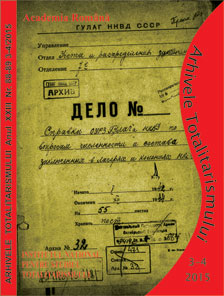External and Local Influences on the Ustasha Ideological System in the 1930s and the First Half of the 1940s
External and Local Influences on the Ustasha Ideological System in the 1930s and the First Half of the 1940s
Author(s): Irina OgnyanovaSubject(s): Politics / Political Sciences, History, Political history, Recent History (1900 till today)
Published by: Institutul National pentru Studiul Totalitarismului
Keywords: Ustashas; Crotian nationalism; terrorism; anti-Serbian movement; homogeneous national state;
Summary/Abstract: The roots of the Ustasha ideology can be found in the traditional pure Croatian nationalism (so-called “pravashestvo”) of the 19th century. But it contained some new elements, which made it eclectic. At the same time, the Ustashas borrowed from the traditional Croatian nationalism, National-Socialism, and fascism. The main idea in the Ustasha ideology in the interwar and war period was the idea of the creation and preservation of an independent Croatian state. Another one was its etnic purification and homogenization. The last idea appeared because of the multi-national and multi-religious character of the Croatian territories. The Ustashas wanted to create an independent and strong state, but their ISC was one puppet state, just a satellite to Nazi Germany. The Ustasha power was entirely supported by the German military forces. This led to the collapse of the Ustasha regime at the end of war simultaneously with the German capitulation. Croats lost their brief state independence and were compelled to enter the new Communist Yugoslavia as a federated republic.
Journal: Arhivele Totalitarismului
- Issue Year: XXIII/2015
- Issue No: 3-4
- Page Range: 7-23
- Page Count: 17
- Language: English
- Content File-PDF

